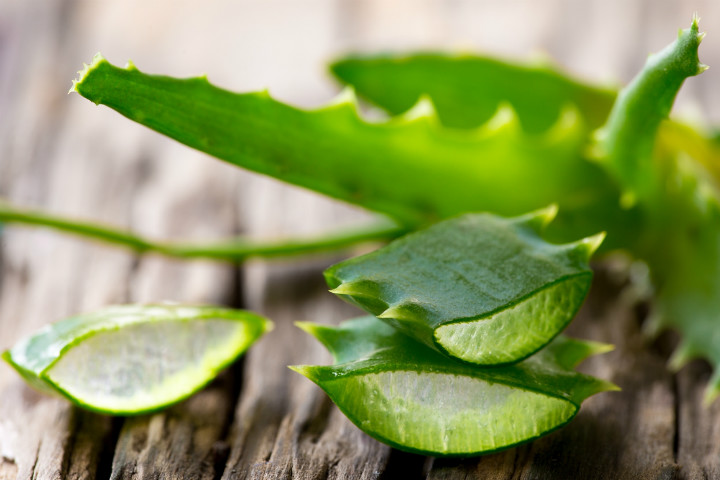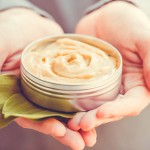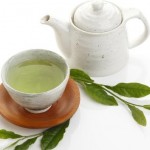The 5 Best and Simplest Ways to Use Aloe Vera as a Natural Skin Remedy
- Category: DIY beauty
- Reply to post
When I was a child, I remember my grandmother always had an aloe plant around. I thought it was a bit strange, not so pretty like most plants my mom had at home, and I never understood why she felt it necessary to have not just one, but several of these spiny looking plants around without blooms or pretty leaves. Until I became interested in health, natural medicine, and natural lifestyle factors 10 years ago, the idea of using a plant to help heal the body didn’t make a bit of sense. However, like most plants, aloe is one that has many benefits and has been used for thousands of years to help heal a variety of health issues. It’s also very easy to grow at home and makes an easy houseplant to keep around for simple skin “emergencies” or needs.
You may have seen aloe vera gels and juices at health food stores that you can purchase, which are made from the gel that’s found in the leaves of the aloe plant. While you can certainly use these if you like, the whole plant leaves are actually very simple to use at home and are much more affordable too. If you already have an aloe plant, all you have to do is take a mature leaf, slice it open lengthwise, and scoop out the gel out of one of the leaves. The gel is essentially the healing part of the plant.
Here’s how to use it:
1. A Skin Healing Mask
Aloe vera is wonderful for not only healing acne scars but also for moisturizing the skin and keeping it youthful. It’s easy to make a healing facemask with nothing more than the gel of 1-2 aloe vera leaf halves. Mix this with some essential oil if you like for a nice scent (mint, thieves, and lavender are nice) or simply use it plain. Apply for 30 minutes and let it sit. It’s mild in scent on its own and has a particularly wonderful cooling feel.
2. A Sunburn Healing Gel
As many people know, aloe vera is wonderful for helping with sunburn. You’ve likely seen those sunburn gels at drugstores with aloe vera, but the better option that will provide many less chemicals is to just use real aloe leaf. It can help reduce redness and pain associated with sunburn fairly quickly and can be applied liberally as much as needed. You can apply the gel plain or can mix it with a carrier oil, such as coconut and hemp, for extra moisturizing and healing benefits.
3. Minor Skin Burns
This is the reason my grandmother always kept aloe on hand. Apparently she knew that her 12 grandchildren would have a few burns here and there. She was also a cook and liked to use it around if she touched a hot stove every now and then. I remember her always using aloe on our burns as children and though we thought she was weird, it always worked quickly. Aloe vera’s moisturizing and healing benefits transcend into the skin to reduce inflammation and aid in repair of the skin fairly quickly. To use it on a burn, apply just enough to coat the burn and cover with a bandage so it can do its job. Leave overnight and it should be better in the morning. The pain goes away almost immediately upon application, however.
4. Cuts and Wounds
The gel of the aloe vera plant contains polysacharride fibers, which is essentially why it’s used as a digestive aid (but that also makes it problematic for some people). These fibers also help to seal wounds and it’s natural cooling properties help soothe pain from cuts and wounds. Apply aloe to minor skin cuts and wounds after you’ve cleansed the area with a warm cloth and some peroxide (yes, that part stings). Then seal it up with a bandage and let it sit to heal overnight or for a day.
5. Itching or Skin Irritation
Psoriasis and skin irritation can both be a pain to deal with (literally) and can also be hard to manage. Many prescription creams and over the counter creams don’t work, and those that do often contain excess chemicals that are not best for our skins to absorb (parabens are common ingredient in these creams). Aloe is one of the best to relieve itching and irritation because it contains glycoproteins which help reduce inflammation upon contact.
What About Aloe for Internal Use?
Another common use for aloe internally is to heal the digestive tract, so if you’re interested in using aloe as a digestive aid, feel free to try it. It’s a well-known use of this plant and many people attest that it works wonders for constipation. Aloe is also incredibly alkaline so it may help reduce inflammation in the stomach, along with feed good bacteria in the digestive tract thanks to its high fiber content and high water content. Just be mindful of how you react and if it causes laxative properties, pain, cramps, or you simply don’t react to it well, reduce or eliminate the amount you ingest and use aloe topically instead. For help with digestion, try some diet-based tips instead.
Let’s appreciate this spiny looking plant a bit more often than many of us do (or in my case, did). Like most plants, it’s got quite the impressive profile at keeping us healthy.
Do you use aloe for anything else besides these above? Share with us so we can give it a try too!
Source: Onegreenplanet.com














